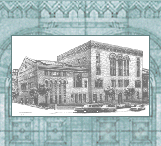

Our
mission is to reduce the number of injuries and deaths due to
injuries,
through prevention, improved trauma care, and improved rehabilitation.
State Assembly Member Wilma Chan (D-Oakland) held a public hearing on October 28 on what she described as "the emerging health crisis of underage drinking." (KPIX 5 on Eyewitness News at 12:00 Midnight)
Today's young people can get all the alcohol they want. Anytime they want it. If you don't believe it, ask them. If you don't like it ...TAKE ACTION. Make a choice to make a change! Maryland Underage Drinking Prevention Coalition
November
5, 2003
Casey's Law, The California Youth Prevention and Recovery Act of 2003: Supporting Youth Alcohol Prevention and Recovery Programs in California

Casey's Law (CA Assembly Bill 216) is named after Casey Godwin, a 20-year old student who was killed by an underage drunk driver. Casey was an active member of Friday Night Live and had devoted her life to preventing youth alcohol problems. Casey's Law addresses the growing problem of alcohol abuse by minors. It establishes centers across the state to support youth alcohol prevention and recovery programs. Casey's Law pays for the establishment of these centers by requiring alcohol producers to pay a fee based on the revenue they earn from the illegal sale of alcohol to minors.
"Children Under the Influence: Alcohol Advertising and Reducing Underage Alcohol Use" was the title for two important public hearings convened by the Select Committee on California Children’s School Readiness and Health. The hearings were convened by California Assembly Majority Leader Wilma Chan, the author of Casey’s Law (AB 216), and were held on October 28th in Oakland, and October 30th in Los Angeles. Nearly 200 people attended the hearings, including a large contingent of 7th and 8th grade students in Los Angeles.
Expert testimony documented that alcohol continues to be the number one substance abuse problem among California’s youth, costing the cash-strapped state more than $6 billion a year. Dr. David Jernigan of
the Center on Alcohol Marketing and Youth (CAMY) presented dramatic testimony about youth overexposure to beer and distilled spirits advertising. Dr. Deidra Brown-Taylor spoke at the Los
Angeles hearing about her research on marketing targeted at underage African American males. Young people presented powerful testimony at both hearings about youth alcohol problems in
their communities and called on California lawmakers to pass Casey’s Law so that the state can get the resources it needs for prevention and recovery programs focused on youth.
The Problem: rising use of alcohol by minors and its link to alcohol dependence among adults. AB 216 addresses the rising problem of alcohol abuse among adolescents, as demonstrated by the following statistics:
- Nationwide, the number of adolescents aged 12 to 17 admitted to addiction treatment during the period between 1994 and 1999, increased. (SAMSHA 1994-1999 Treatment Episode Data Set (TEDS) http://wwwdasis.samhsa.gov/teds99/highlights_1.htm)
- Alcohol use is quite widespread among today's teenagers. Nearly 4 out of every 5 students (78%) have consumed alcohol by the end of high school; and nearly half (47%) have done so by 8th grade. (Johnston, LD et al. Monitoring the Future national results on adolescent drug use: Overview of key findings, 2002. (NIH Pub # 03-5374). National Institute on Drug Abuse. http://monitoringthefuture.org/pubs/monographs/overview2002.pdf)
- In California, 26% of 11th graders reported consuming five drinks in a row in the past two weeks (a standard indicator of heavy drinking).
The solution: Alcohol recovery and prevention centers for youth. CA AB 216 addresses the growing problem of alcohol use and abuse by youth, by creating at least 68 centers to support youth alcohol recovery and prevention in the state of California. AB 216 would create at least one center in each county in California, and at least ten additional centers in counties with populations of more than 2 million residents. The centers would be administered by local counties and would provide a variety of services, education and activities related to treating and preventing youth alcohol abuse.
Alcohol fees pay for centers, counteract aggressive marketing tactics by alcohol producers. AB 216 pays for these recovery and prevention centers by levying fees on alcohol producers. The amount of the fee is based on the revenues that alcohol producers collect from selling to underage drinkers, as estimated by the Department of Alcoholic Beverage Control.
- Underage drinkers consume about 12% of all the alcohol purchased in the Unites States, or 3.6 billion drinks annually, with the vast majority of it consumed in a risky fashion. (OJJDP. "Drinking in America: Myths, Realities, and Prevention Policy http://www.udetc.org/documents/Drinking_in_America.pdf)
- Furthermore, our nation's youth report that it is not hard to get access to alcohol. Nearly twenty five percent of 6th graders report that it is "fairly easy" to "very easy" to get beer, while 26.5% of 12th graders report that their access to beer is "fairly easy" with 52.4% reporting "very easy." (PRIDE Questionnaire Report: 2001-02 National Summary, Grades 6 through 12. Parents Resource Institute for Drug Education. http://www.pridesurveys.com/main/supportfiles/natsum01.pdf )
More Information:
 |
 |
|---|